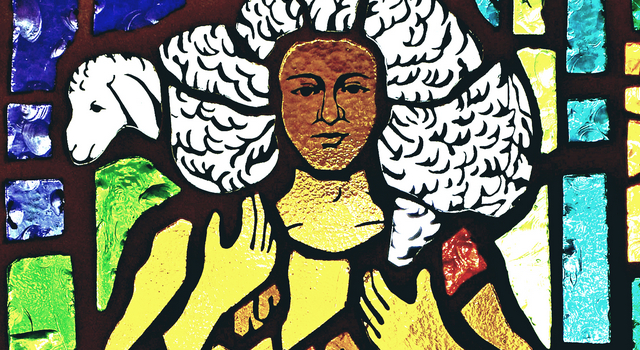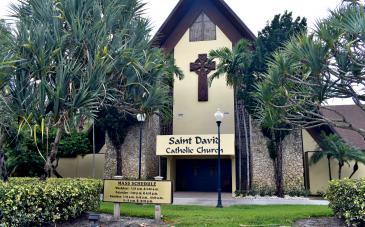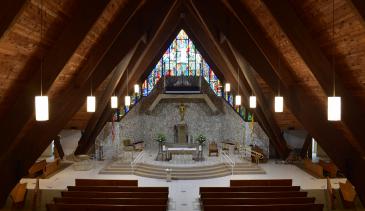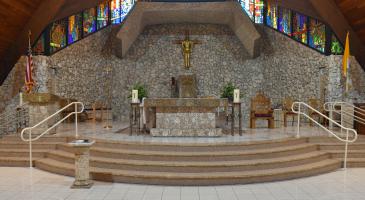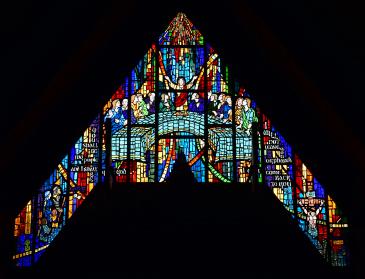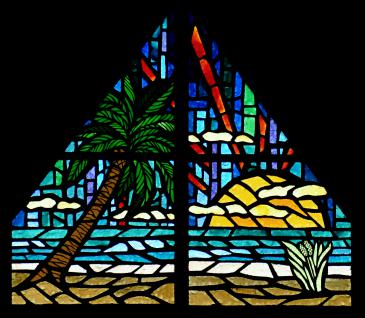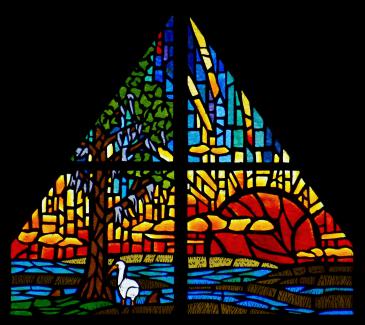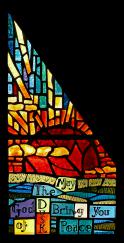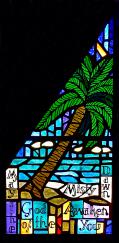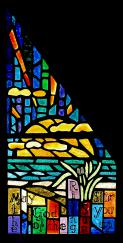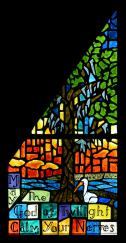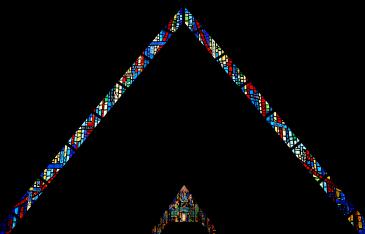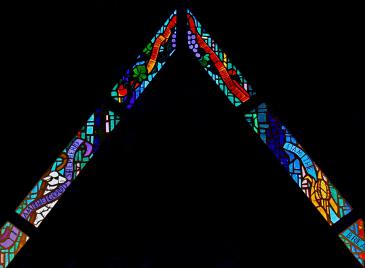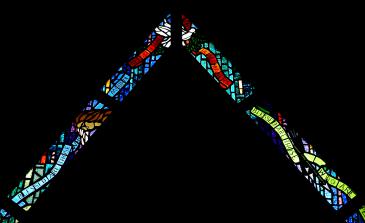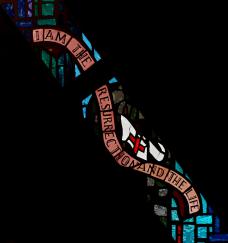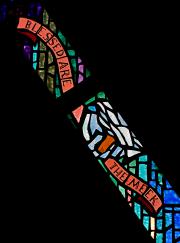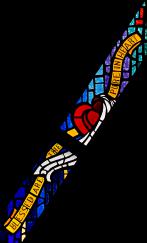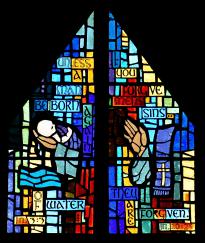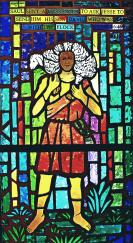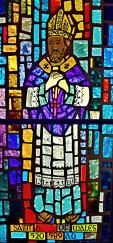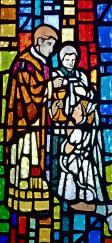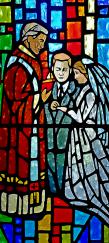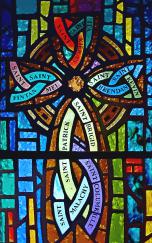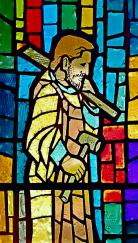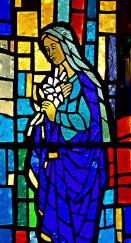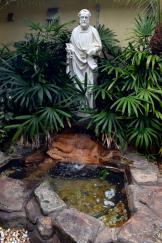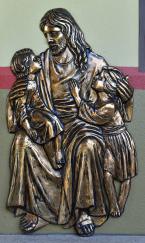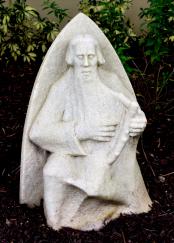By Jim Davis - Florida Catholic
Photography: JIM DAVIS | FC
DAVIE | Leaders from vastly different times and places – ancient Israel and the British Isles of the Dark Ages – meet as patrons of St. David Church.
St. David of Wales is one of the most famous British saints, a sixth century bishop who brought Christ to parts of Wales and England. David the king is one of the most important characters in the Bible, uniting the Israelite tribes and guiding them to worship God.
The bishop, known in Welsh as Devi Sant, is known mainly through traditions and a biography written a century after his time. He was said to be born to a prince who was a nephew of the legendary King Arthur. Some also say that St. Patrick prophesied David’s birth.
David studied under St. Paulinus, then traveled throughout Wales and what is now England. Tradition says David founded 12 monasteries, including the famous Glastonbury.
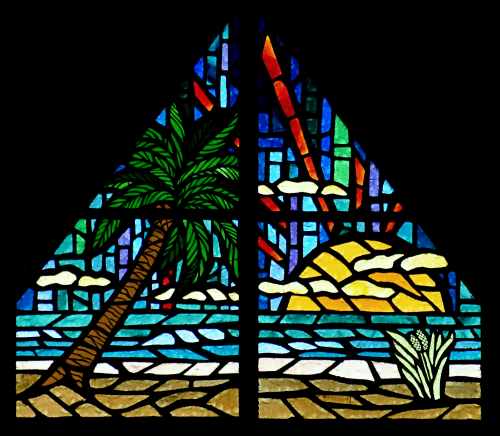
Photographer: Jim Davis | FC
The window at the east transept shows a sunrise . . .
Life at the monasteries was strict, filled with prayer, study and hard work. He and his monks ate only bread and vegetables, on land they plowed and tilled themselves – without donkeys, oxen or other work animals.
The monks shunned alcohol, earning David the nickname of Dewi Ddyfrwr, Welsh for “Water Drinker.” He also occasionally stood up to his neck in water, reciting scripture, as a penance.
He gained a reputation for working miracles, including healing St. Paulinus of blindness. He also resurrected a widow’s son. And at the Synod of Brevi in 550, as a crowd complained they couldn't see or hear him, a dove settled onto his shoulder, and the ground rose under him.
He was then elected bishop of Wales, establishing his seat in Menevia, which then was renamed for him. At the present-day cathedral, the altar bears a stone that David is believed to have brought back from a pilgrimage to Jerusalem.
David died around the turn of the seventh century. His last recorded words were simple: “Be joyful, brothers and sisters. Keep your faith, and do the little things that you have seen and heard from me.”
Wales has celebrated March 1 as St. David’s Day since at least the 12th century. Celebrations usually include folk songs, folk dances and national costumes decorated with daffodils. People also hold Te Bach, a tea with Welsh fruited bread.
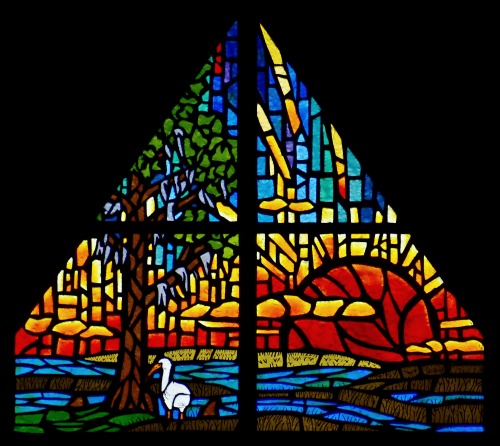
. . . while the west transept window shows a sunset.
The other St. David is, of course, better known. At various times a shepherd, a singer, a warrior, an outlaw, a king, an adulterer, a prophet – and an ancestor of Jesus – David emerges as one of history’s most colorful characters.
His rise began as the prophet Samuel arrived in Bethlehem, seeking the next king of Israel. Samuel met the eight sons of Jesse – then, to the family’s astonishment, he anointed the youngest: David, who had the humble job of tending the family flock.
David stayed home as his brothers joined the army of King Saul during a war against the Philistines. But when he brought supplies, David found the Israelites cowering before the Philistine champion, the giant Goliath. David volunteered to fight him, and brought him down with a single stone from his sling.
The deed made David a hero, and Saul took him into his household. He became a court minstrel, singing and playing to ease Saul’s fears. Some scholars even think David was the inventor of the 10-stringed lyre.
Saul, however, sought to kill David in a fit of paranoia. David fled, drawing hundreds of fellow outlaws, living on the run for several years. Finally, Saul was killed in a battle, and David succeeded him as king.
Victory after victory followed, and the kingdom expanded greatly. Unfortunately, several scandals struck David’s palace. In one, he slept with the wife of one of his most prominent soldiers, then had him killed. In another, one of his sons launched a brief revolt against him, then died at the hands of David’s chief general.
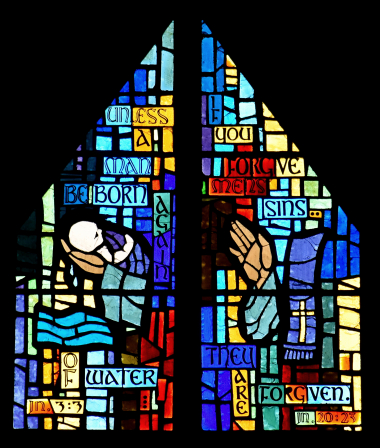
Photographer: Jim Davis | FC
In place of a rose window, the north window at St. David Church depicts baptism.
Despite those and other failings, David was called “a man after God’s own heart.” He molded the various tribes of Israel into a unified kingdom. He laid plans for the magnificent Temple, which was built by his son Solomon. His psalms are still read and sung after three millennia. And Jesus was born not only through his descendants but in his hometown of Bethlehem.
Both Davids are highlighted at their church in the Archdiocese of Miami, designed by its founding pastor, the Irish-born Father Gabriel O'Reilly. Founded in 1974 with a couple of hundred worshipers, the members first attended Mass Saturday nights at a grade school, then Sunday mornings at a restaurant.
The parishioners also began a building fund, which in 1979 yielded their own church. The building combines a traditional cruciform floor plan with an A-frame roofline. Its many sharp angles are filled with faceted-glass windows of sacraments and Florida scenes, such as palms and egrets.
Six classrooms were added in 1983, followed with a whole school three years later. In 1994, it was named a National Blue Ribbon School of Excellence by the U.S. Department of Education.
Father O'Reilly died in 2013 after nearly 40 years as pastor at St. David, and the Town of Davie renamed a street for him.
Laity have always been active at St. David. Soon after it began, they organized men's and women's clubs, a religious education program and a St. Vincent De Paul Society.
In 1995 they also formed a community ministry with the help of three sisters from the congregation of St. Joseph of Cottolengo. Called HOPE Outreach (Helping Other People Everyday), the organization has grown into a nondenominational outreach to the needy.
Other parishioners take part in groups such as Columbiettes, the Legion of Mary, Bible studies and a fast-growing ministry to the bereaved.
